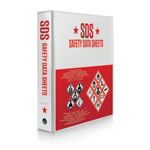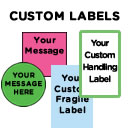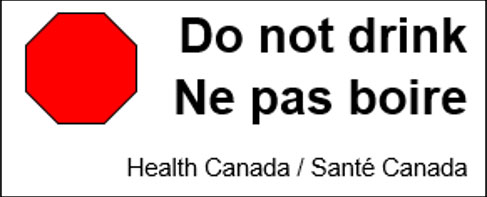
COVID-19 has definitely pushed industries and our government to be creative, to meet the necessary demand for alcohol-based hand sanitizers, and to find a way to meet the shortage of standard packaging forcing us to turn i.e. wine bottles into hand sanitizer bottles overnight. However, now that time has passed and analyses have been done Health Canada has found it wise to add a layer of protection to beverage containers being used for hand sanitizers due to potential and unintentional ingestion (Data from the Canadian Poison Control Centers show accidental ingestion has increased 4.5 fold in 2020.) That’s not chardonnay you are drinking!
Alcohol-based hand sanitizers must comply with the packaging and labeling requirements of the Natural Health Products Regulations (NHPR) and Health Canada’s safety and efficacy standards as outlined in the antiseptic skin cleansers monograph.
Labeling on your beverage container must include these statements:
- “for external use only”
- “keep out of reach of children” and
- “if swallowed, call a poison control centre or get medical help right away”
Closures such as a pump or dispensing cap are noticeable and are not generally used on beverage containers. Such closures will help to differentiate hand sanitizer packages from beverages or other ingestible products. That is why beverage containers that are unable to accommodate such closures should not be used i.e. beer or soda cans.
Acceptable closures include:
- pumps
- dispensing caps (maximum width/diameter of the opening should be no more than 20% of the width of the cap):
- flip top lids
- disc top caps
- any cap or dispensing lid that forces interaction with the product and is not listed below as an unacceptable closure:
- drinking spouts
- beer bottle caps
- conventional twist-off caps
- lids, corks
Note: Natural Health Product Regulations requires safety seals or security packaging for all-natural health products, including alcohol-based hand sanitizers.
Front-of-pack graphic symbol, warning statement, and Health Canada attribution must appear together within a black border, of at least 1 point, with a white background to ensure visibility. The warning should appear on the top 50% of the main display panel label.
The warning label must include:
- the text “Do not drink / Ne pas boire” bolded black text on a white background
- English and French text on separate lines in either official language order
- font size that is proportional to the size of the container
- label and branding of the hand sanitizer that is equal to or greater than the product’s brand name or a minimum of 22-point font
- acceptable font types include non-decorative sans serif fonts, such as Arial and Helvetica and the letters cannot touch each other
- the text “Health Canada / Santé Canada” must be black text on a white background
- font size can be 50% smaller than warning text but minimum font size is 11 point
The symmetrical octagon graphic symbol must:
- precede the warning statement
- be red in colour and framed or enclosed with a black border of a minimum of 1 point weight on the white background
- be the same height as the stacked warning statement
This is an example of a warning label from Health Canada:
Manufacturers will have a grace period of 8 weeks after this policy comes into effect, this is to allow the existing stock to be used up. Hand sanitizers packaged in beverage containers and distributed after November 27, 2020, must have an appropriate closure along with the warning statement and graphic.
Here at ICC Compliance Center, we can create custom labels using your Safety Data Sheets (SDS). We can also create a template that you can print using your own printer. ICC has a wide variety of custom or stock solutions, please contact us for more information.
We have all the products, services and training you need to ensure your staff is properly trained and informed.
 Safety Data Sheet (SDS) Services |
 Custom Labels |






